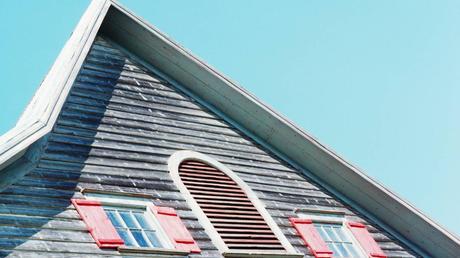
Last Updated on February 9, 2024 by Kravelv
Roof pitch, often referred to as the slope or incline of a roof, is a critical factor influencing your home's aesthetics and functionality. Understanding roof pitch is essential for homeowners, architects, and builders alike, as it plays a pivotal role in determining everything from the style of your roof to its resilience against weather elements. In this article, we'll delve into the intricacies of roof pitch and explore why it matters for the well-being and longevity of your home.
1. Definition and Measurement:
The evaluation of roof steepness, known as roof pitch, is quantified by a ratio, such as 4:12, where the initial number denotes the vertical ascent, and the subsequent number indicates the horizontal extension. For instance, a 4:12 pitch implies that for each 12 inches of horizontal distance, the roof ascends by 4 inches. Understanding this fundamental aspect is crucial, especially when considering roofing projects or maintenance like roof repair Fairmont WV.
2. Aesthetic Appeal:
One of the most apparent impacts of roof pitch is its influence on the overall look of your home. Specific roof pitches complement different architectural styles. A steep pitch may evoke a sense of grandeur and tradition, while a shallower pitch can exude a more modern and sleek appearance. Choosing a pitch that aligns with your home's architectural style can enhance curb appeal.
3. Weather Resistance:
Roof pitch significantly affects how well your roof sheds water and snow. Steeper pitches allow precipitation to run off quickly, reducing the risk of water pooling and potential leaks. In snowy regions, a steeper pitch helps prevent heavy snow accumulation, preventing structural stress and possible collapse.
4. Ventilation and Attic Space:
Roof pitch influences the available space within your attic. A steeper pitch creates more room for ventilation, aiding in temperature regulation and moisture control. Proper ventilation is crucial for preventing mould growth and ensuring the longevity of your roof's structure.
5. Material Compatibility:
Different roof pitches align better with specific roofing materials. Steeper pitches offer versatility, accommodating materials like slate and asphalt shingles, whereas low-pitched roofs may necessitate specialized options such as membrane roofing. A critical aspect in this decision-making process, particularly when considering roofing projects or emergencies requiring 24 hour roofing services, is comprehending the synergy between roof pitch and materials. This ensures selecting a roofing solution that harmonizes durability with aesthetic appeal.
Conclusion:
In essence, roof pitch is a fundamental aspect of residential architecture that extends beyond its visual impact. It serves a practical purpose, influencing the effectiveness of your roof's drainage, attic space, and weather resistance. Whether you are building a new home or considering a roof replacement, understanding the significance of roof pitch empowers you to make informed decisions that contribute to the functionality and beauty of your living space.
